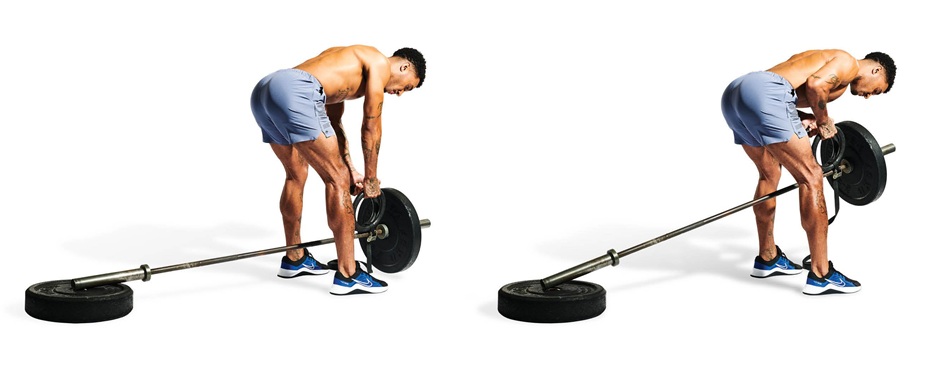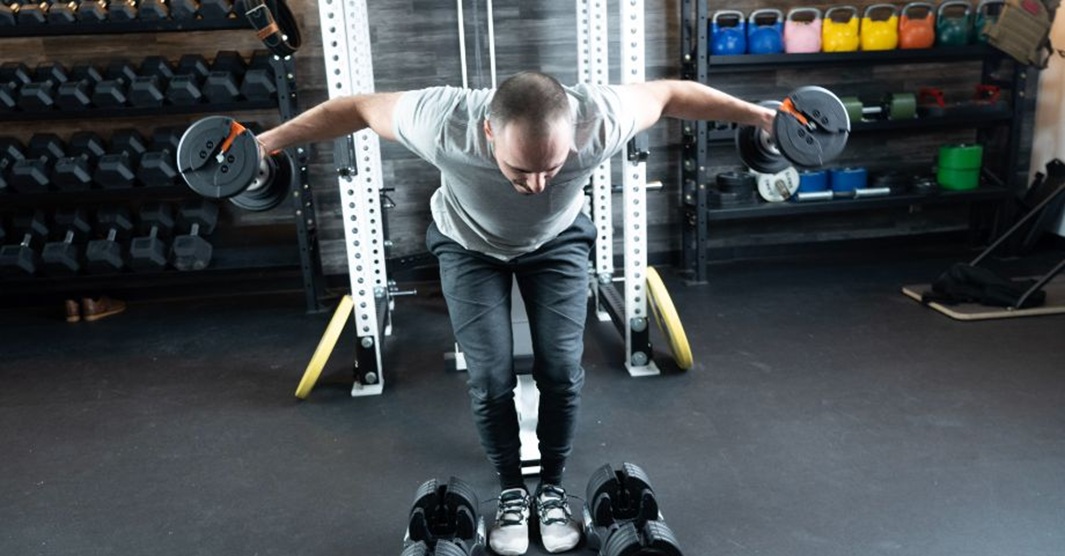Back Day for Busy Lifters: Build Size and Strength in Less Time
No time? No problem.
If you’re juggling a full schedule—work, family, life—you don’t need to spend hours in the gym to build a strong, muscular back.
The key is training smart, not just hard. With the right exercises, structure, and intensity, you can build a back that’s thick, wide, and strong in 30–40 minutes, 1–2 times per week.
In this article, you’ll learn:
- How to train your back efficiently
- The best exercises to include (and what to skip)
- A complete 30-minute back workout
- Training methods that maximize muscle in minimal time
- Recovery and time-saving tips for consistency
Why a “Busy Lifter” Needs a Different Approach
If you’ve only got 30 minutes to train:
- You can’t waste time on fluff exercises
- You need compound lifts with high ROI
- You must maximize muscle activation per set
- You should structure workouts for efficiency, not exhaustion
The solution? Minimalist programming with intensity and intent.
What Muscles to Focus On (Still Matters)
Even with less time, you still need to cover the key regions of the back:
| Area | Muscle Group | Key Function | Must-Hit With |
| Width | Lats, Teres Major | Shoulder adduction/extension | Vertical pulls |
| Thickness | Rhomboids, Traps | Scapular retraction | Rows/shrugs |
| Support Core | Erector Spinae | Posture, stability | Deadlift work |
| Symmetry | Rear Delts | Shoulder balance/posture | Isolation work |
You don’t need a dozen exercises—just 3–5 highly effective ones with dialed-in execution.
The 30-Minute Back Workout for Busy Lifters
This workout is designed to hit every major region of the back with high-efficiency movements. It uses supersets, compound lifts, and targeted isolation to get more done in less time.
Back Workout A – Full Coverage in 30 Minutes
0:00 – 5:00 | Warm-Up (1 round):
- Band pull-aparts – 2 sets of 20
- Light face pulls – 2 sets of 15
- Dead hang or scapula pull-ups – 30 seconds
5:00 – 18:00 | Strength Superset
1A. Barbell Row (or Chest-Supported Row) – 4 sets x 8 reps
1B. Straight-Arm Cable Pulldown – 4 sets x 12–15 reps
Rest: 60 sec between supersets
💡 Barbell Row: Focus on explosive pulls, pause at top
💡 Pulldown: Control the negative, stretch at top
18:00 – 26:00 | Muscle-Building Superset
2A. Lat Pulldown (Wide Grip) – 3 sets x 10–12 reps
2B. Rear Delt Cable Fly (or Reverse Pec Deck) – 3 sets x 15–20 reps
Rest: 30–45 sec between sets
💡 Pulldown: Pull to chest, not behind neck
💡 Rear Delts: Lightweight, full range, zero momentum
26:00 – 30:00 | Finisher
3. Rack Pulls (or Dumbbell Shrugs) – 2 sets x 10 heavy reps
Optional drop set: Strip 20% of weight and go for max reps
Optional Swap: At-Home or No-Barbell Version
Swap:
- Barbell Row → Chest-Supported Dumbbell Row
- Rack Pull → Heavy Dumbbell Shrugs
- Lat Pulldown → Pull-Ups or Resistance Band Pull-Downs
You can do this with dumbbells, bands, and a cable machine.
Time-Saving Training Techniques That Still Build Muscle
Supersets
Pairing two non-competing movements (e.g., a row and a fly) saves time and boosts intensity.
Rest-Pause Sets
Pick a weight, do as many reps as possible, rest 15 seconds, go again. Efficient fatigue, fast.
Mechanical Drop Sets
Start with a harder variation (e.g., wide-grip row), then switch to an easier version (e.g., neutral grip) without changing weight.
Set Caps
Set a timer for each superset block (8–10 minutes). Hit as much quality volume as possible within the window.
Weekly Structure for Busy Lifters
Even training just once or twice per week, you can grow your back if you follow smart programming and progressive overload.
| Schedule | Recommendation |
| 2-day full body split | Include back rows and pulldowns in each session |
| 3-day push/pull/legs | Make “pull day” back-focused |
| 4-day upper/lower | Train back in both upper sessions |
| 1 dedicated back day | Use the 30-min session above as your base |
Recovery Tips When You’re Short on Time
If you’re training fast and hard, recovery becomes even more important:
✅ Prioritize Sleep
Even one extra hour makes a difference in performance and muscle repair.
✅ Don’t Neglect Protein
Aim for 1.6–2.2 g of protein per kg of body weight to fuel recovery.
✅ Stretch and Mobilize Between Sets
Face pulls, band dislocates, or foam rolling for 30–60 sec between back sets can help posture and prevent stiffness.
✅ Cut Junk Volume
If an exercise doesn’t challenge your back in a meaningful way, cut it. You want quality, not just quantity.
Common Mistakes for Time-Crunched Lifters
❌ Skipping Back Day Entirely
Back is out of sight, but it’s everything for posture, strength, and aesthetics. Don’t skip it—even if you only have 20–30 minutes.
❌ Only Training What You Can See
If your routine is chest, arms, shoulders… and more chest, your physique will suffer. The back balances and anchors your entire frame.
❌ Doing Too Many Isolation Moves
Rear delts and lat pulldowns are great—but start with heavy hitters (barbell rows, rack pulls, or pulldowns). That’s where growth happens.
❌ No Progression
If you’re short on time, you need to track performance. Add reps, increase weight, or reduce rest over time.
The 80/20 Rule of Back Training for Busy Lifters
If you’re serious about progress, but pressed for time, apply the Pareto principle:
80% of your results will come from 20% of your exercises.
Focus on:
- Pull-ups or pulldowns
- Barbell or dumbbell rows
- Shrugs or rack pulls
- One isolation move (face pulls or rear delt flys)
Do them well. Progress them. Recover. Repeat.
Final Thoughts: Back Training That Fits Real Life
You don’t need to train like a pro bodybuilder to get pro-level results. You need a plan that fits your life, not fights it.
Even with just 30–40 minutes, 1–2x per week, you can:
- Build real size and strength
- Improve your posture and joint health
- Create visible width and thickness
- Lay the foundation for long-term success
No more excuses for being “busy lifters”. Show up, train hard, train smart—and walk away with a back that speaks for itself.
🔗 Related Articles in This Series:
- Back Muscle Anatomy Explained
- The Best Back Workout for Beginners
- Deadlifts for Back Growth: Do They Really Work?
- How to Build a Thick Back with Rowing Movements





